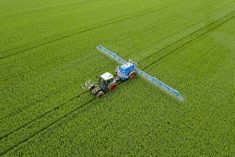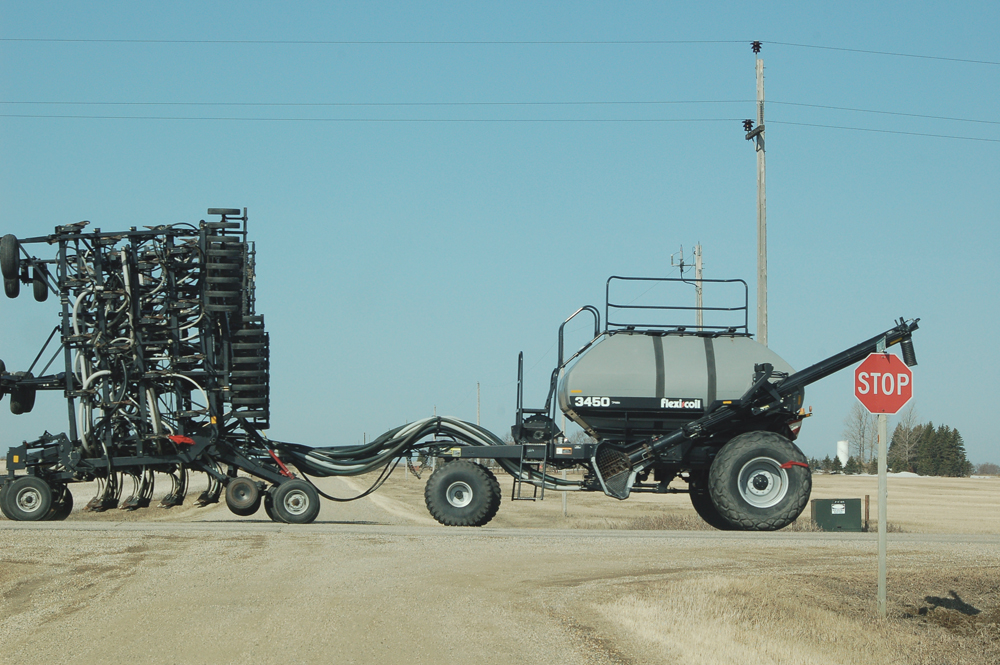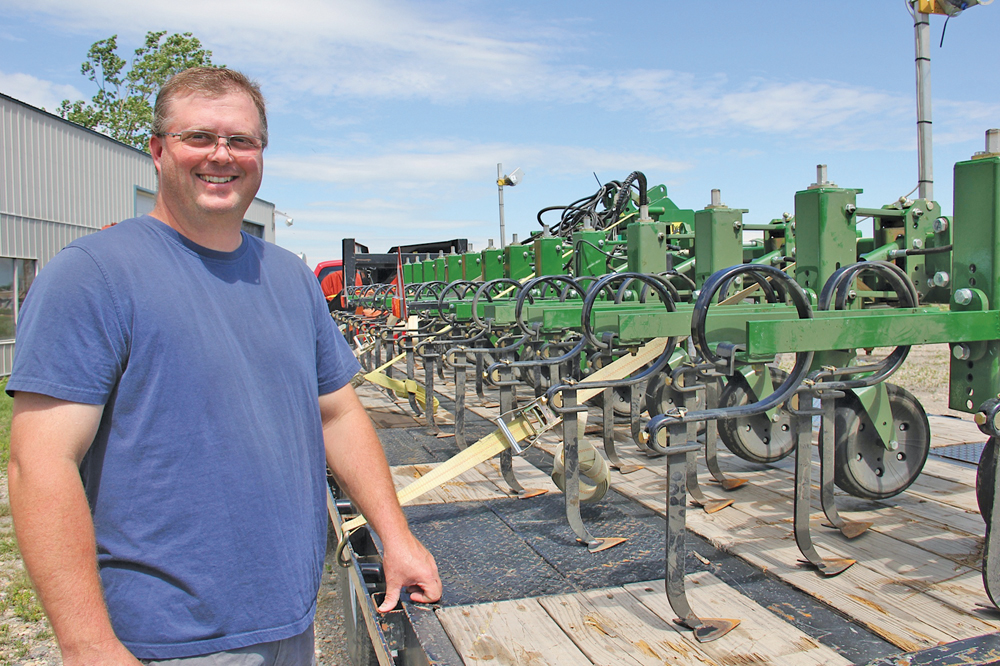Anew resource becomes available to Canadian farmers later this month to help develop agricultural health and safety plans custom fit for their own farm operations.
The new Sécur i Fe rme Canada FarmSafe Plan is a business risk management tool for voluntary adoption by farmer-owners of all types and sizes of farms, say Canadian Agricultural Safety Association (CASA) staff who have developed it in consultation with farmers and provincial workplace regulators right across Canada.
This is a planning tool to help farmers integrate safety and health into their overall farm business risk management, said CASA agricultural safety and health specialist Glen Blahey.
Read Also

Journal pulls long-cited glyphosate study for ethics violations
The journal Regulatory Toxicology and Pharmacology has retracted a 2000 Monsanto-linked glyphosate review, drawing new scrutiny as Bayer faces mounting legal pressure.
Industrial workplaces, where knowingly endangering workers is a criminal offence, use a similar planning approach to protect employees.
The FarmSafe Plan attempts to repackage this approach for agriculture, so that farmers, too, take appropriate steps to ensure safe workplaces, Blahey said. “It’s a way for farmers to take control, from a very strategic perspective, of occupational safety and health issues on the farm.”
The plan lays out a series of steps and processes to clearly illustrate conditions of a farm workplace that may pose a safety or health threat.
COMMUNICATING RISK
Components include committing to creating a safer workplace, developing processes for identifying and reducing risks in the farm workplace, and communicating safer work procedures.
The plan asks farmers to write a general policy statement on the farm’s commitment to safety as well as the responsibilities of those working on the farm to create a safe work environment.
What follows is a series of how-to steps for procedures such as self-inspection of the farm site to identify, assess and document physical condition hazards. These can include any foreseeable number of conditions such as the physical and ergonomic conditions of the workplace and hazards such as chemicals or other health hazards such as noise or poor air quality.
The plan also sets out a series of steps for controlling hazards through the creation of standard operating practices and safe work procedures.
That can include such things as ensuring those working on the farm get appropriate training for the jobs they need to do, as well as instruction in using personal protective equipment and what to do in case of emergencies.
WRITTEN COMMITMENT
Communication of responsibility in the farm operation involves first writing down expectations for safe work behaviour and then communicating those expectations, so everyone understands what’s expected.
The Canada FarmSafe Plan also flags for farmers some new and perhaps ne v e r -b e f o r e -c ons i d e r e d approaches, such as deliberately setting aside time in the work year for workers to get skills upgrading.
A “wellness component” urges farmers to become more conscious of the physical and mental health needs of themselves, their families and their staff. That awareness could lead to more consideration of reasonably paced work schedules and time off.
Blahey stresses the FarmSafe Plan is not a series of checklists. Farm operations are far too varied to have enough lists to match every possible circumstance.
Nor is it “yet another documentation” program, that duplicates other programs. Farmers with on-farm food safety programs or environmental plans in effect will see this as a complimentary component to those programs, he said.
CASA staff have consulted with provincial regulators of workplace safety right across the country to see if this approach will address and meet workplace legislation regulatory requirements, Blahey said. With this plan, farmers will have a tool that meets or may even exceed the occupational and health regulatory requirements of any province in Canada, he said.
CHANGING CULTURE
It was emphasized at the national CASA conference last November, where the Canada FarmSafe Plan was unveiled, that implementing a farm plan focused on occupational health and safety – based on precautionary approaches – helps alter a “culture of agriculture” where personal safety and health take a back seat to time constraints and the high value placed on obsessive work habits.
It was noted that other dangerous workplaces, such as mining and logging, have improved their safety record by adopting safer work procedures.
Dean Anderson, chair of CASA, said he hopes these safety plans will start to create a “culture of safety” on farms. That happens by integrating planning for safety into their overall farm plan, he said. Safety and protection of the human resource on the farm should not be seen as an “add on” or something to worry about separately from the rest of the farm business.
“What we’re trying to do is get farmers to understand that planning for safety is nothing different than what you’d do in a normal business plan.”
This week is Canadian Agricultural Safety Week in Canada, with this year’s theme placing special emphasis on the implementation and documentation of farm plans for safety.
The website of the Canadian Agricultural Safety Association (CASA) where the FarmSafe Plan will be posted is www.casa-acsa.ca/english/.
———
“It’sawayforfarmerstotakecontrol,from averystrategicperspective,ofoccupational safetyandhealthissuesonthefarm.”
– GLEN BLAHEY, CASA
———
Top five causes ofagriculture fatalities inCanada
Machine rollovers Machine runovers Machine entanglements Traffic collisions Being pinned or struck by a machine
SOURCE: CANADIAN AGRICULTURAL INJURY REPORTING















